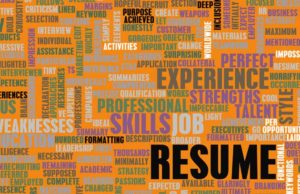 Answer: Why am I spending so much time writing about resumes? Because it is not just about writing resumes. It is how to think about who you are professionally, what your particular talents are and leveraging that for your future.
Answer: Why am I spending so much time writing about resumes? Because it is not just about writing resumes. It is how to think about who you are professionally, what your particular talents are and leveraging that for your future.
How do you think, say and write a clear message that telegraphs that impression to a stranger? Here is my answer. Do you agree?
Do not assume your reader is well versed and knows about the industry and the level of seniority you have achieved. Assume ignorance which mean you need to explain what your company does, its size and what the title means (if it is not clear) by explaining reporting lines. And, BTW, this reader has attention deficit disorder.
This means that you have, as I have written, only about 15 seconds to convince her/him to read the rest of the document. Keep in mind, you are writing your most impressive accomplishments first and what follows should be achievement focused highlights and no more than 2-pages. You do not have to provide a blow by blow description of every job you’ve held. That is boring and unnecessary. Account for years of experience and consolidate information.
Your only objective with the resume is to convince the reader that you should be included in the small group selected for further evaluation. Visually, the resume should be uncluttered and organized so that it can be skimmed easily. Always start with current information first since that should be the most impressive.
Here is where there is challenge. The resume should give an overall impression, if you are applying for a VP level role, of clear thinking, ability to manage complex assignments, original (problem-solving) ideas, and leadership talents. It should also point out the general direction you wish to take in your career. This is very hard to do. What is compelling to the reader are “mini” stories that illustrate what you can do and what kudos you received. Selecting what stories to tell is critical in illustrating the direction you wish to take. If you are multi-directional, it will be necessary to create several versions of the resume.
As much as I point out the viewpoint of the reader/client and suggest the resume be written from that perspective, there is a balance to achieve. Candidates (job seekers) are evaluated from the point of view of, “Can s/he solve our problems and meet our needs?” You must be alert to protecting yourself from being hired for the wrong reasons. The impression the resume leaves should align with your longer-term goals. The job you are seeking should fit those goals. Select brief success stories that focus on what you have achieved and what you wish to achieve in your next role, e.g. new strategy, building teams, thought leadership, repositioning initiatives, etc.
Despite being as clear as you can about the broad role you are seeking, a company will sometimes fixate on a specific part of your history that is directly applicable to meeting their needs. A company does not hire you from the perspective of offering you the job you have always wanted. Instead their focus can be on a narrower aspect of your work history. It will be up to you to clarify the role and determine if it is a long-term fit.
At the level we are discussing, I think taking a narrower job will undermine a top performer whose goal it is to head up a function. For example, if the company has a number of crises happening, the job description may talk about a broad communications role. However, the reality is, this company will hire a professional with firing line experience who has led other company leaders through media crises. In these situations, knowing what the key priorities are, translates into the job you will be doing. If you have done your homework initially, you will know when to bow out of a situation and that can be equally as important as receiving the right offer.
